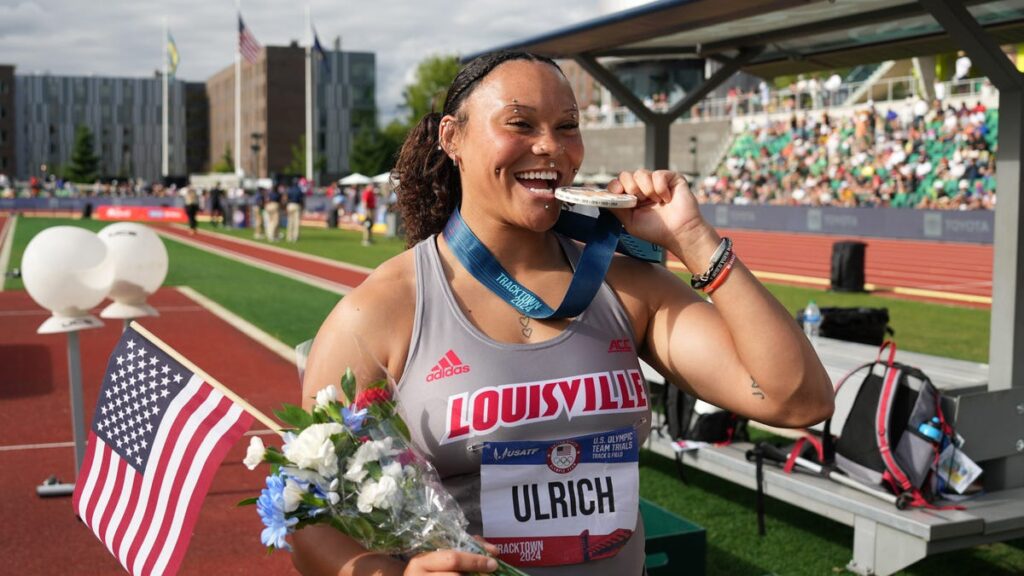Louisville track and field’s Jayden Ulrich posted the top qualifying distance in the discus this season as the NCAA championships are set to begin in Eugene, Oregon, on Wednesday.
She’s one of 11 U of L athletes from its men’s and women’s teams who qualified for nationals. Kentucky is sending a combined 22 from its programs. Of them, Ulrich has the best shot at winning gold.
Ulrich, a senior who represented the United States in the 2024 Paris Olympics, is exactly the kind of athlete who has thrived in the past structure of college track. It’s long been a de facto farm system for the U.S. national track and field team, and other countries too, to build competitors for the Olympics.
Ulrich is officially a world-class athlete.
Now that the House v. NCAA settlement has been finalized, in theory, there’s more money than ever to support athletes like Ulrich.
Yet the $20.5 million designated for revenue sharing with athletes for schools like Louisville and Kentucky may not have much left over for non-revenue sports like track and field.
The historic settlement paved the way for athletes to get paid directly from university athletics departments that have long benefited from their labor. But the only sports guaranteed to get a healthy portion of the money are from football and men’s basketball.
Elite athletes like Ulrich are in danger of being reduced to a second-class status when it comes to getting a share of the money proportionate to their accomplishments.
Now guess how much other participants in the NCAA championships who don’t have the accolades are going to receive.
It’s as if their contributions don’t count because there’s not a crowd of 100,000 packing a stadium on a fall Saturday.
What it comes down to is there’s no broadcast or streaming outlet paying in the billions to broadcast events like the NCAA championships this week.
Track and field is not a revenue-generating sport.
Football is. For most universities that field a team, it’s a rainmaker for the entire athletics department. It’s easy to understand why football players should command the highest percentage of the revenue.
But how much is it worth having an athlete like Ulrich represent a school, and the nation, on the world’s biggest stage?
Cats’ fans are fond of saying, Big Blue gets through. Now put that in the context of former UK hurdler turned Olympic gold medalist and world record holder Sydney McLaughlin-Levrone. Because of her dominance in the 400 meter hurdles, she’s made the Kentucky brand ring out in some places throughout the world where it never would have otherwise resonated.
Publicity like that is invaluable.
Track and field has the second-most participants in the NCAA to football. But if indoor and outdoor track along with cross country is combined, it has the most total participation opportunities in the NCAA, as some athletes compete in more than one season.
Thanks to the House settlement, track and field now has a roster limit of up to 45 scholarships. (Schools are not required to fully fund that amount.) Previously they could have unlimited rosters, but only 18 women’s and 12.6 men’s scholarships.
The roster cap was what held up the settlement from being finalized as Judge Claudia Wilken wanted to include a grandfather clause to ensure athletes currently on rosters could not be cut in an effort to meet the new limit.
If only there was a judge who could protect a slice of revenue to ensure there’s a place for track and field athletes like Ulrich too.
Reach sports columnist C.L. Brown at [email protected], follow him on X at @CLBrownHoops and subscribe to his newsletter at profile.courier-journal.com/newsletters/cl-browns-latest to make sure you never miss one of his columns.
#Paris #Olympics #athlete #University #Louisville #star

